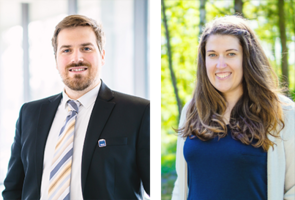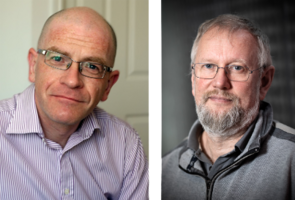EG-ICE 2022 had two high-profile keynote speeches that gave novel academic and industry perspectives.
Welcome session: EG-ICE 2021 Best Paper Awardee Presentation (IFC based Framework for Generating, Modeling and Visualizing Spalling Defect Geometries)
Bridges are exhibited to an increased level of deterioration because of their exposition to high traffic load and environmental conditions. To ensure traffic and structural safety as well as durability, bridges are inspected frequently. Registering condition states, assessment, and data preparation for maintenance tasks are time consuming and error prone because of highly paper based workflows and manual copy pasting. An improvement in digitizing bridge condition data decreases the demand of manual work and helps to lower financial efforts for these tasks. The linchpins of condition assessment are defects and deficiencies. Based on requirements from practice and statistical analyses of a sample of bridges in Thuringia, severe and frequent defects have been identified. Next, an information model that contains semantic and geometric damage information has been designed. Finally, tests have revealed the potential in the field of digitizing bridge condition data for collaboration. However, further investigation is required to include monitoring and analysis data.

Keynote 1: Engineering education challenges: Learning to solve real-world problems by working interdisciplinary, remotely, and with the latest technology
As digitalization advances in all areas of life, digital and social competencies are becoming integral to the competence profile of tomorrow's engineers. Digitalization has the potential to make university teaching more efficient and effective in many aspects, in addition to conveying new and relevant knowledge in the student’s chosen field. One possibility is to provide access to practical learning units when attendance at the university campus or an associated laboratory is not possible or if collaboration takes places in a concurrent course on multiple international universities. Technology further enables the type of communication and collaboration that becomes more and more relevant in, potentially, globally distributed engineering teams.
In this keynote, we will briefly review the basic ideas of educational science, how to apply them in engineering education, and how to use virtual experimentation to redesign existing lectures with clearly-defined learning and practical objectives. Next, we will introduce product development and/or engineering that thrive on the interaction of people from many disciplines and backgrounds. We want to discuss what it's like to cross disciplinary boundaries and engage with the attendees to uncover synergies for future engineering (education) collaboration.

Keynote 2: How Dependable is the Digital Twin?
The rapid growth in interest in digital twins is fuelled by advances in data gathering, machine learning and digital representation of assets. Some estimates place the size of the market in this technology as high as $100bn in the coming years. However, although the growing literature on digital twins covers applications as diverse as transport, energy, and built environment, it is limited on the principles underpinning their successful design and construction.
Combining real-world data with design information and learned models, a digital twin can support analyses that inform interventions in a physical system, updating the digital twin in turn. As we come to rely on such twins, we must consider how dependable they are as a basis for decision making. Can we rely on a twin that is a heterogeneous multi-disciplinary compound of models owned by different stakeholders, that constantly evolves with its physical counterpart?
Drawing on experience in several domains, we will begin to chart a course towards a discipline of Dependable Digital Twin Engineering including foundations, methods, and tools to engineer digital twins that so that reliance can justifiably be placed on their correct operation.